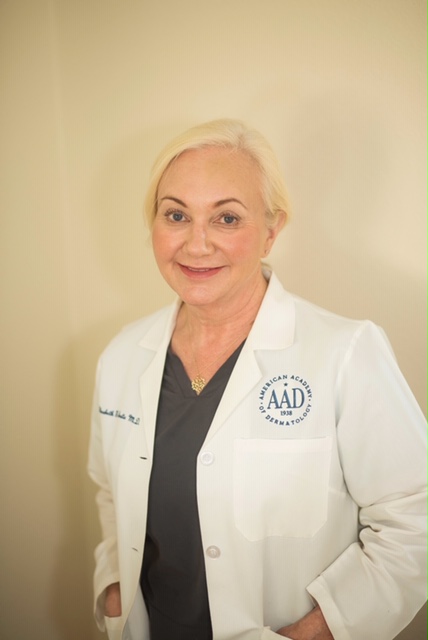
by Elizabeth Stratte, M.D. Pediatric Dermatology Specialist
Even if you’re largely staying indoors due to social distancing, as temperatures start to rise, it’s important to take a serious look at your current skin-care routine and make some changes to be summer-ready.
ACNE BREAKOUTS
Summer sweat can clog your pores. To help prevent acne, blot sweat from your skin with a clean towel or cleansing cloth whenever you fell sweaty. Wiping can irritate your skin, which can lead to a breakout, so it is best to gently blot. Wash sweaty clothes, headbands, and hats and masks before wearing them again. To avoid further clogging your pores, use non-comedogenic sunscreens, insect repellents and lotions on your face, neck, back, and chest. The label may also say “oil free” or “won’t clog pores.”
There are a lot of acne products out there with a lot of different ingredients. It can be overwhelming as well as discouraging with false promises and high expectations. Here are some of the the most effective ingredients to look out for.
SALICYLIC ACID
Best for mild acne, Salicylic acid focuses on exfoliating the top layer of skin. This ingredient is best for addressing blackheads and white heads as well as acne scarring. Look for cleansers with Salicylic acid for clearer skin and smaller pores.
BENZOYL PEROXIDE
Best for oily skin and cystic acne, Benzoyl Peroxide (BP) works to exfoliate into the middle layer of the skin to address oil production and decrease bacteria that causes cystic acne. Watch out for products that claim to reduce oil production. Your skin produces a certain amount of oil and no ingredient can change this. Benzoyl Peroxide can absorb the oil, but not decrease its production. And you can use your BP cleanser on your underarms to kill bacteria and reduce odor!
GLYCOLIC ACID
Good for all skin types, Glycolic Acid is an AHA (Alpha-Hydroxy Acid) that exfoliates revealing newer brighter skin. It’s a gentle way to exfoliate skin versus harsh manual exfoliation, which can cause more irritation, breakouts, and acne scarring. Glycolic Acid is also great for the body to address breakouts and overall dull looking skin.
RETINOLS/TRETINOINS
Retinols or prescription strength tretinoins are hands down the best ingredient for acne. They increase cell turnover in the skin to quickly treat and prevent the beginning stage of acne, comedones (clogged pores). They help to exfoliate the inside of the pores which will increase the shedding of the lining in the pores that creates acne, and prevents the pimple from forming. Everybody’s skin tolerates retinol differently, so we always recommend use with a thick non-comedogenic moisturizer, at night and SPF everyday, as it can make your skin dry and sensitive to the sun. Mild retinols can be found in over the counter products. Your doctor or health care provider may prescribe a stronger, prescription strength tretinoin cream.
DRY IRRITATED SKIN
If your skin is dry this summer, try these tips: Shower immediately after getting out of the pool, using fresh, clean water and a mild cleanser or body wash. Soaps and body washes labeled “antibacterial” or “deodorant” can dry your skin. Slather on a fragrance- free moisturizer after every shower and bath, or a moisturizing sunscreen lotion or spray it on before 4 pm. Moisturizers work by trapping water in your skin, so you’ll need to apply it within 5 minutes of taking a shower or bath. And carry moisturizer with you, so you can apply it after washing your hands and when your skin feels dry.
FOLLICULITIS
Every hair on your body grows out of an opening called a follicle. When follicles get infected, you develop folliculitis which looks like pimples, but tends to be itchy and tender. These usually occur on your thighs, arms, chest and back. To reduce your risk of getting folliculitis this summer, change out of your tight workout clothes immediately after you exercise, and wear light-weight, loose-fitting clothes when it’s hot. Your doctor or provider may prescribe an antibiotic lotion to help clear up the problem.
HEAT RASH
Blocked sweat glands cause this. Because the sweat cannot get out, it builds up under your skin, causing a rash and tiny, itchy bumps. When the bumps burst and release sweat, many people feel a prickly sensation on their skin. To reduce your chance of getting prickly heat wear light-weight, loose-fitting clothes made of cotton and exercise outdoors during the coolest parts of the day or in air conditioned rooms. The rash will resolve on its own. Menthol, and camphor-based creams or ointments can also help ease the itching.
For more information or to schedule a pediatric dermatology appointment please give our office a call at (530) 221-1565.